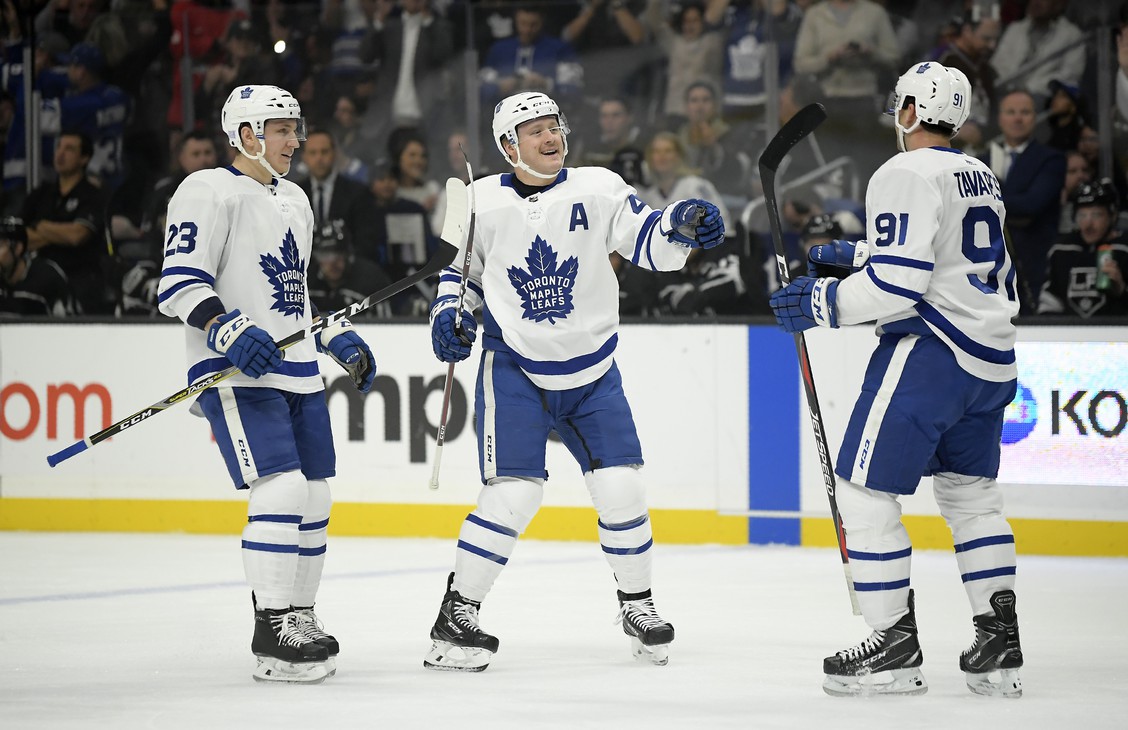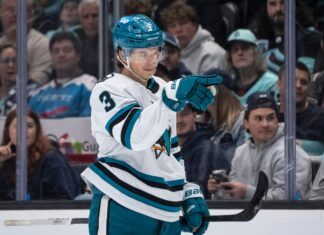There are 60 million things to get to this week.
The Rielly contract dominated the discourse over the weekend, but we also have some lineup shuffles to talk about up front and on the blue line, a struggling power play, and some interesting developments down on the Marlies. Let’s dive in.
Early Thoughts on Morgan Rielly’s New Contract
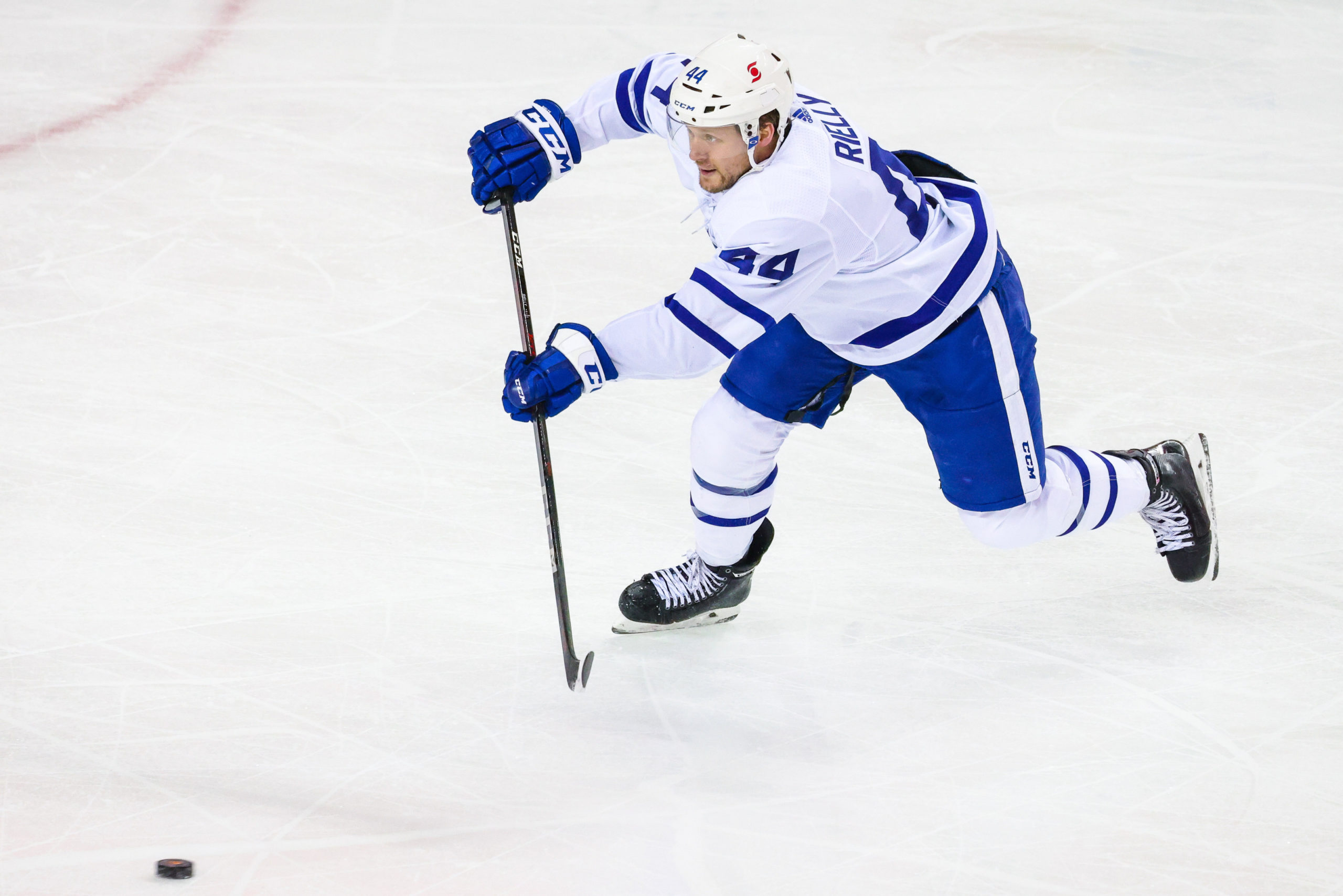
In case you somehow missed it, the Toronto Maple Leafs signed Morgan Rielly to an eight-year, $60 million extension on Friday afternoon. Rielly will be 36 when the deal expires, the team can’t trade him without his permission until 2028, and the $7.5 million cap hit will be a steep raise over his current $5 million salary. Given that he’s already in his ninth season with the Leafs, he might end up breaking the franchise record for games played.
Rielly probably took a slight discount to stay in Toronto. While $7.5 million is still first-pairing money, it’s short of the cap hit of players like Dougie Hamilton ($9 million), Seth Jones ($9.5 million), Zach Werenski ($9.58 million), Charlie McAvoy ($9.5 million), and Alex Pietrangelo ($8.8 million). While Rielly is older and a step below some of the players on that list, he probably could have landed a little bit more elsewhere, or the same amount of money over seven years rather than eight.
That being said, the fact that he took a slight discount doesn’t necessarily make this a great deal for the Leafs. Just because the car salesman gave you $10k off doesn’t mean that you’re making a great investment. As per Evolving Hockey, Rielly’s career xGAR/60 is well below Jake Muzzin’s and slightly below T.J. Brodie’s mark as well. His leaky defense has always dragged down his overall production a fair bit, and if given the choice, I’d rather spend the $7.5 million to add a couple of good forwards. He’s not a star on either special teams unit, nor can you really use him against top competition.
With Rasmus Sandin also in the fold, the Leafs have two left-shooting offensive defencemen locked up for the foreseeable future. The duo will eat up all of the power-play minutes, so don’t expect to add another offensive defenseman anytime soon. Sandin with Rielly is a bit of an awkward fit long-term — both players figure to be in the top four eventually, but it’s possible that neither player is a fit on a true shutdown pairing.
Rielly is probably worth the $7.5m cap hit today, but when you give out an eight-year deal to a player in their late 20s, you know what to expect in the final years. While his speed should help him stay effective late in his career, I’m not sure that there’s enough upside in the early years to make it worth the downside in the later seasons. Given that they could have gotten a major return for him in a trade, I was always in favour of trading him rather than extending him.
Off the ice, I’m a big fan of Rielly. He’s an easy player to root for, and I’m happy to see him cash in. However, the Leafs are in the business of trying to contend for a Stanley Cup in a league that is all about who can spend cap space most effectively. Just like any long-term deal, a rising cap could help to make this contract look a lot better in a few years, but as of now, it’s a bit much (even with the slight discount). For a team that lacks top-six forward depth at the moment, this deal makes it difficult to improve in that area for the foreseeable future.
If the Leafs struggle, it’s going to be difficult for them to pivot in another direction. John Tavares and Morgan Rielly aren’t going anywhere. Matthews clearly isn’t getting traded, either. Since it makes little-to-no sense to trade Nylander at his current cap hit, their only real option in a major shake-up scenario is to trade Mitch Marner. Rielly isn’t just part of the core now; he’s signed for five years longer than anyone else.
Of course, trading Rielly was always going to be a high-risk move for Kyle Dubas. The rest of the top four is off to a dicey start to the season, and if Dubas had traded Rielly this offseason, the fan base is probably complaining about how weak the defense group is. While the “how would we ever replace him?” logic is what got Dion Phaneuf a big extension way back when, Rielly’s mobility should help him to age more gracefully, and at least the Leafs are actually trying to contend at the moment.
The odds of Dubas, or any General Manager, being in the same job in 2030 are quite slim. As he probably won’t see the down years of this contract, I can understand why he’d want to extend Rielly rather than dealing him for futures. The team will have to continue to search for bargain contracts to support their core, but keeping Rielly will at least provide short-term benefits. Let’s hope that Rielly ages well and the cap rises quicker than expected.
Recent Lineup Decisions
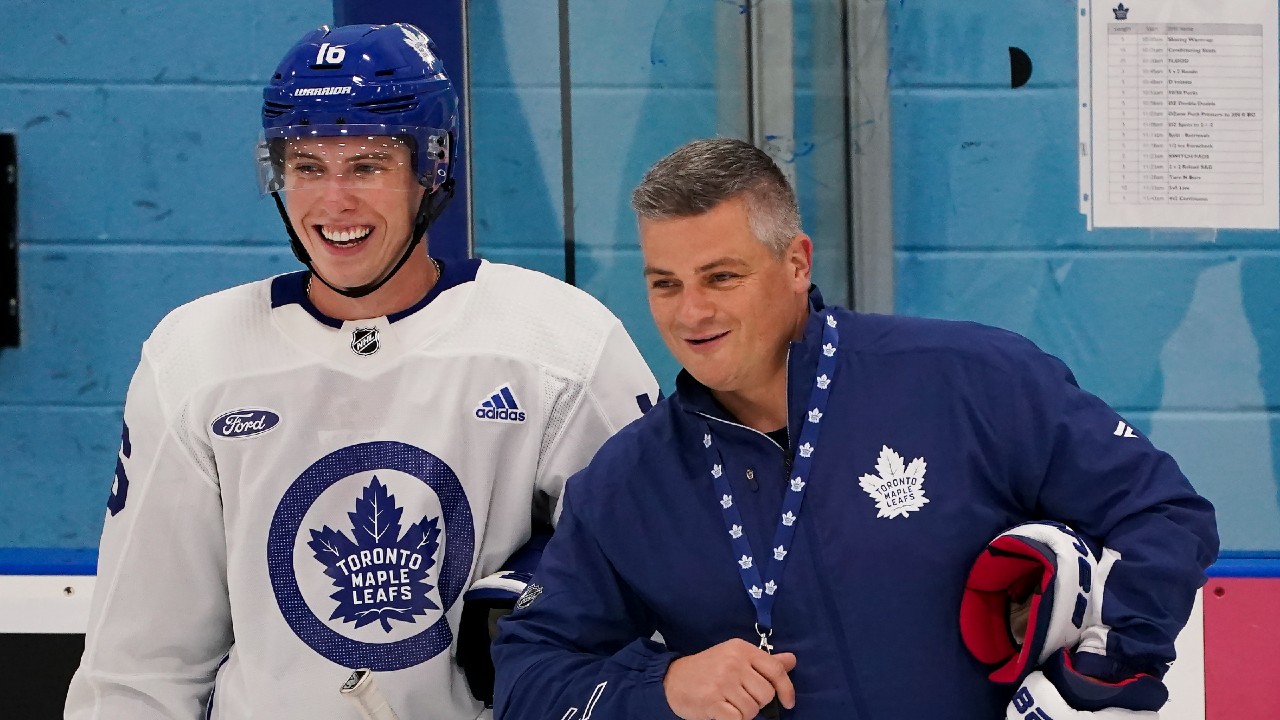
I recorded a podcast a week ago that ended up getting scrapped due to audio issues. Shortly after the Leafs were blown out in Pittsburgh, and I called on Sheldon Keefe to switch up the forward lines. I thought it was time for Nick Ritchie to move down to the bottom six. Even though I didn’t like the thought of a Ritchie – Spezza – Simmonds line, I argued that it’s better to have a mediocre fourth line than a mediocre first line. I asked for Alex Kerfoot to move into the top six, as even though I liked him on the checking line, he’s at least proven to be a respectable contributor on Tavares’ wing.
Keefe’s lineup against Chicago ended up matching my proposed lineup. While he would have taken a ton of criticism if the team lost that game, I’m not sure that I could have blamed him. When this team struggles, the common fan reaction is to quickly blame everyone and everything, and it sometimes isn’t warranted. While I think that there are legitimate questions to ask about Keefe’s playoff performances, I’ve liked his work so far this season. Losing streaks aren’t always due to bad coaching.
David Kampf and Ondrej Kase are currently both in the top five in the NHL in defensive zone face-off start percentage. While Kase hasn’t been used in that role much in the past, Kampf needs offensive help around him and Kase has looked completely fine there thus far. Given that Marner, Nylander, Spezza, and Simmonds also primarily play on the right-side, Kase might be glued to Kampf for quite a while. I’d keep Kerfoot and Bunting in the top-six given their handedness while asking Kase to drive that line offensively (despite having just two points in nine games, I’ve liked Kase’s game thus far).
Eventually, this team needs to add a top-six forward who can help to replace Zach Hyman. That will push one of Alex Kerfoot or Michael Bunting down in the lineup and provide the Leafs with some depth in case of injuries. While both Kerfoot and Bunting are playing well at the moment, I’d like a true first-line-calibre forward to help create an elite line.
Nick Ritchie is simply not worth his $2.5 million salary at the moment, at least not on this team. He looked way out of place in the top-six, and his lack of speed makes him an awkward fit on a checking line. His current fourth-line role with Spezza and Simmonds is the best spot for him for now, but I’d seriously consider looking into trade options if the situation remains about the same by the deadline.
I wouldn’t touch the other forward lines at the moment. Auston Matthews pairs well with William Nylander, while Mitch Marner led the league in 5-on-5 primary points per minute when he played with John Tavares back in the 2018-19 season. Marner can avoid tougher matchups now as he finds his confidence. Matthews doesn’t need a highlight-reel pass in order to score, while Nylander sets up the line on offense with his play-driving and zone-entry abilities.
On defense, I’d continue to rotate between Timothy Liljegren, Justin Holl, and Travis Dermott. All three are NHL players, but there are seven players for six spots at the moment and it doesn’t make much sense to dress seven defensemen. I’d stick with a Sandin – Liljegren pairing after their performance against Detroit, but eventually, I’d like to go back to playing Rielly with Brodie. I might try Liljegren for a few games with Muzzin and have Sandin play with either Dermott or Holl. While it’s good to experiment, we’ll probably get back to the original pairings after a while.
Power Play Struggles
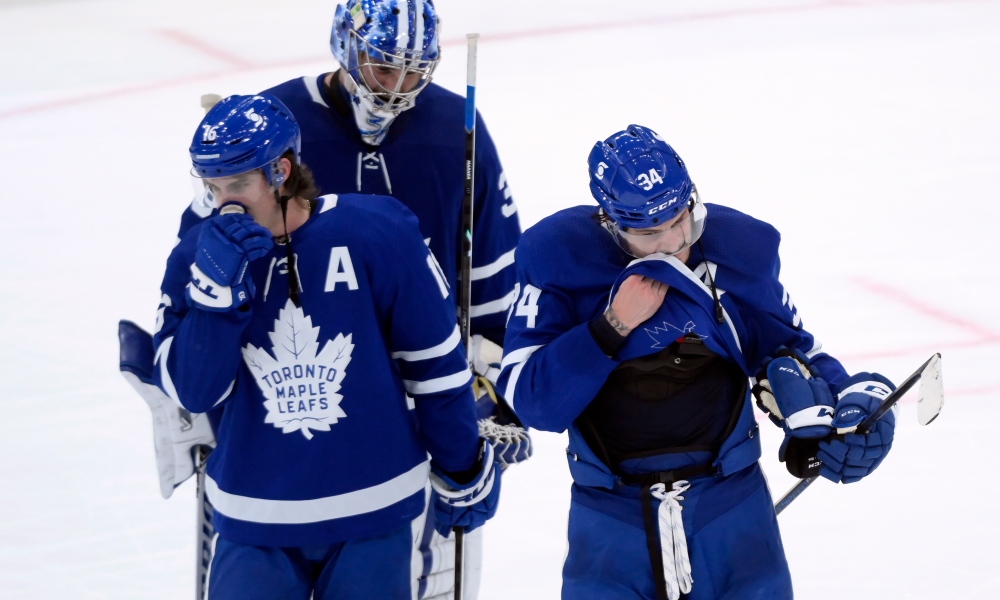
As controversial as it might be for the 26th-ranked power-play in the league, I’d keep the power play units as-is for now. They may need to “balance the units” eventually, especially if the top unit remains mediocre (or worse), but at this point, the second unit doesn’t urgently need the extra help. Bunting is playing well in the middle of the 1-3-1 and could carve out a niche for himself on the top unit. If they are going to make a change right now, I’d move Sandin up to the top unit and provide them with another shooting threat.
Let’s not forget that Marner has posted elite power-play production over the course of his career. He was magical there with James van Riemsdyk on his non-one-timer side (the same spot that Spezza likes). If the first unit doesn’t work eventually, I’d let him run his own unit where the net-front option is the primary goal scorer rather than Matthews. Eventually, you hope that four high-end forwards can figure things out, but perhaps Sandin and his shot would draw a little bit more attention out there than Rielly does.
If the big four simply can’t figure things out — and as hard as it is to be patient at this point, the payoff, if it does, is worth it — I’d go back to Matthews and Nylander on their one-timer sides and throw Bunting in the middle of the first unit rather than Marner. While Marner may lose some points and ice time, Bunting might simply be better than Marner in the bumper role, and Marner would be a massive upgrade over Engvall on the second unit. Maximizing team success is more important than individual success.
At the end of the day, a unit with Matthews, Marner, Nylander, and Tavares obviously should outproduce a unit with Spezza, Bunting, Engvall, and Ritchie. However, the results are the results at the end of the day, and mediocrity or worse is unacceptable. One way or another, this team needs to manufacture a high-end power play come playoff time or there will be serious questions to be asked of the coaching staff.
Dating back to March 4, 2021, it’s now been half of a season — a 41-game sample — where the Maple Leafs have averaged 9.5% on the power play.
Final Thoughts
- The Marlies have a handful of NHL-calibre players. Josh Ho-Sang is a zone entry machine, and if you need offense on the right side, he’s a great option. Brett Seney and Joey Anderson are good options if you need help on the checking line; it’s convenient that they play on opposite sides. Alex Biega can play third-pairing minutes if needed, while Kirill Semyonov is a two-way center who outplayed Adam Brooks in the preseason. If you need to save $1 million or so next season, I wouldn’t mind giving someone line Seney a job on a checking line.
- Semyon Der-Arguchinstev is exceeding my expectations thus far, and he’s definitely a step faster than Mikhail Abramov. However, it’s tough to be a good two-way player at his size and he’s not much of a goal scorer whatsoever. He reminds me a lot of Josh Ho-Sang, but his speed and transition skill could earn him some NHL games eventually. Abramov, meanwhile, reminds me of a young Adam Brooks, as he needs to get a step quicker before he’s ready to be a top AHL player.
- Topi Niemela is now up to 16 points in 18 games in a pro league. I love his instincts. I think the Leafs might have something there, and I’m excited to watch him dominate at the World Juniors again. Unfortunately, Rodion Amirov is hurt right now, but his skillset still screams “lengthy NHL career.” I haven’t watched much of Niemela or Amirov as of late, but I have been watching Matthew Knies, who is a beast on the puck. It’s safe to say that I like this team’s amateur scouting.























